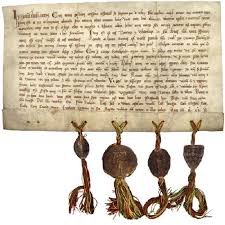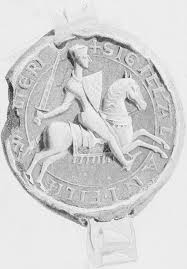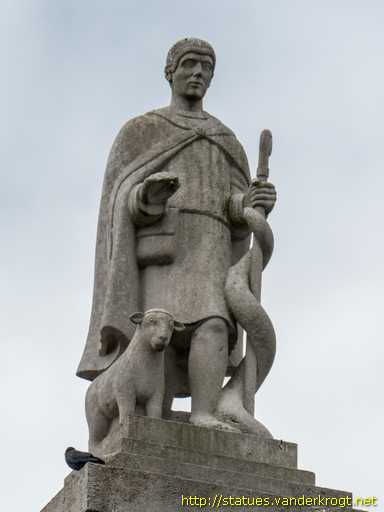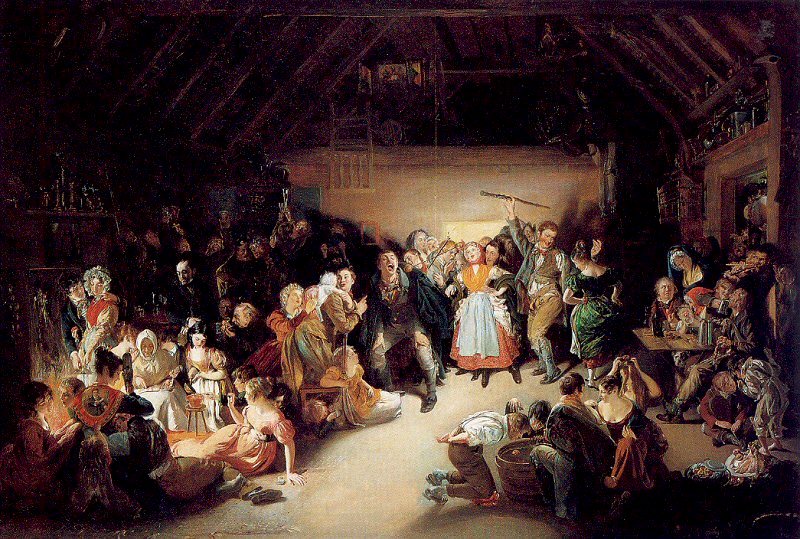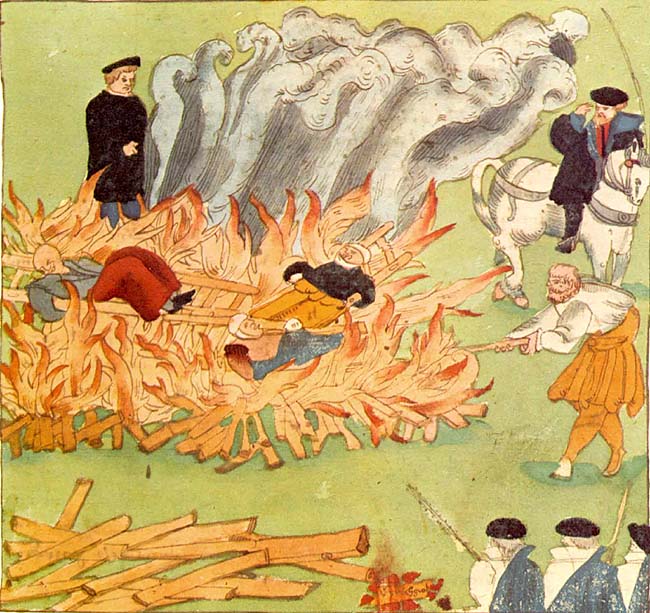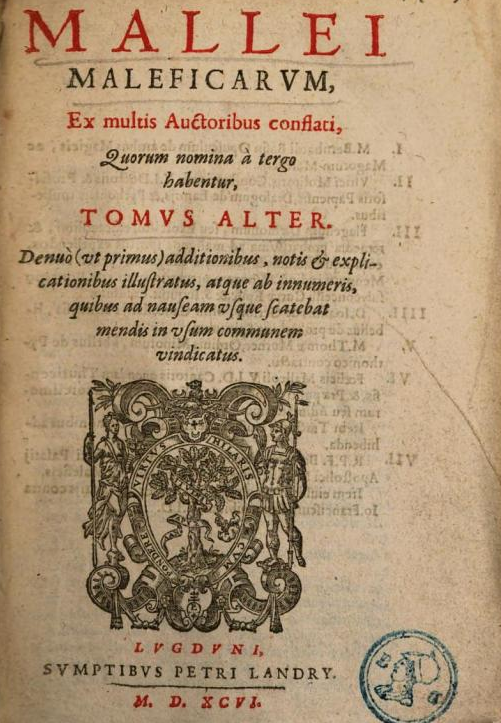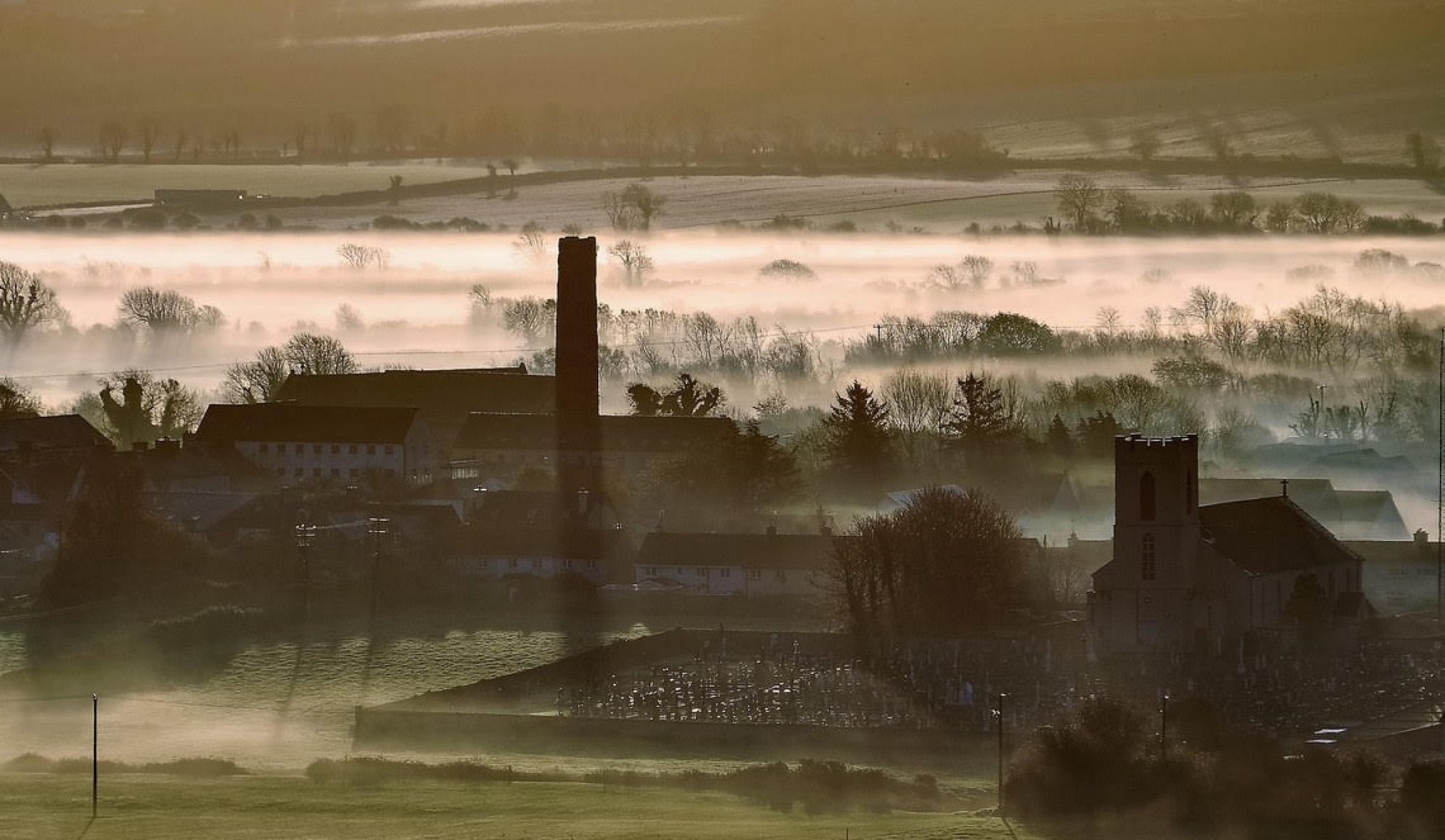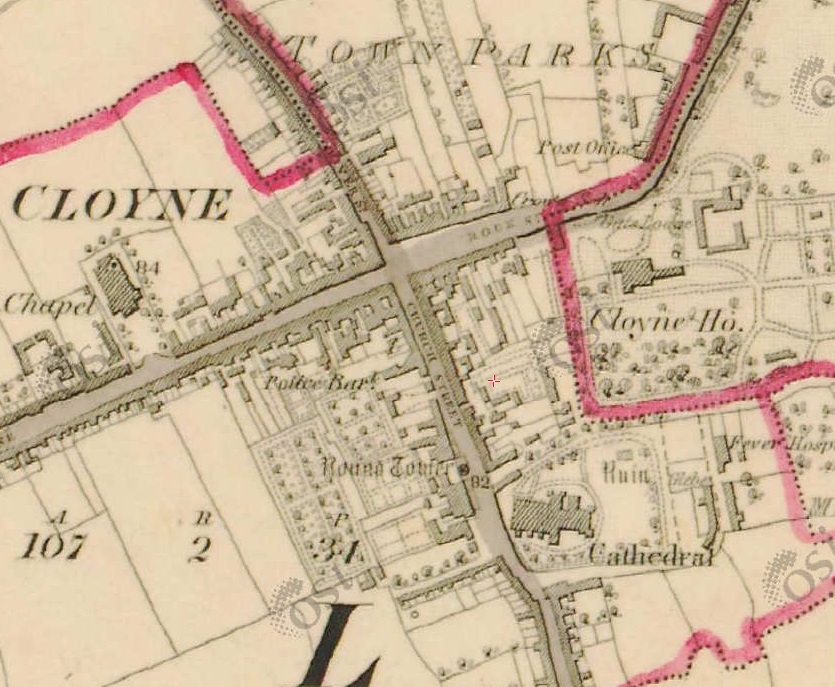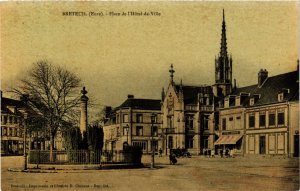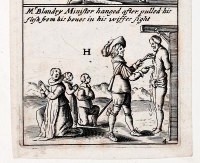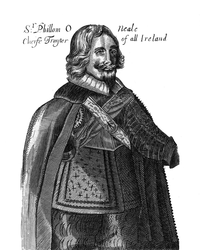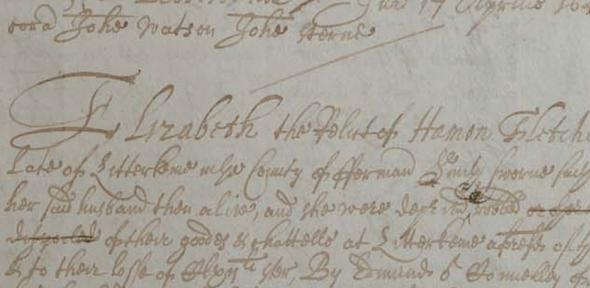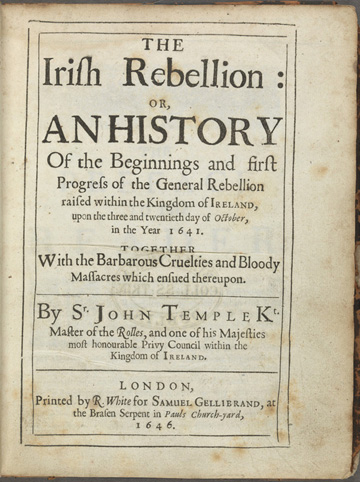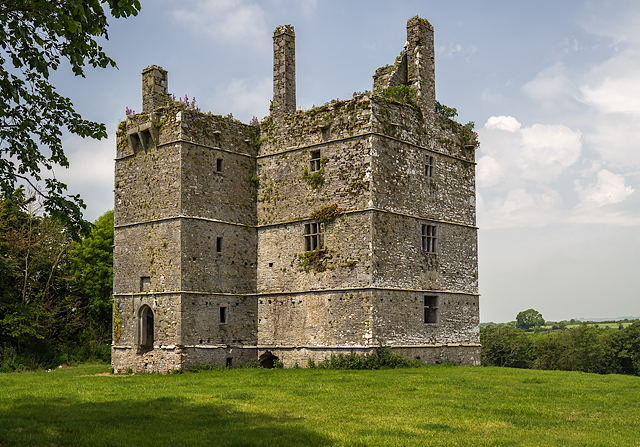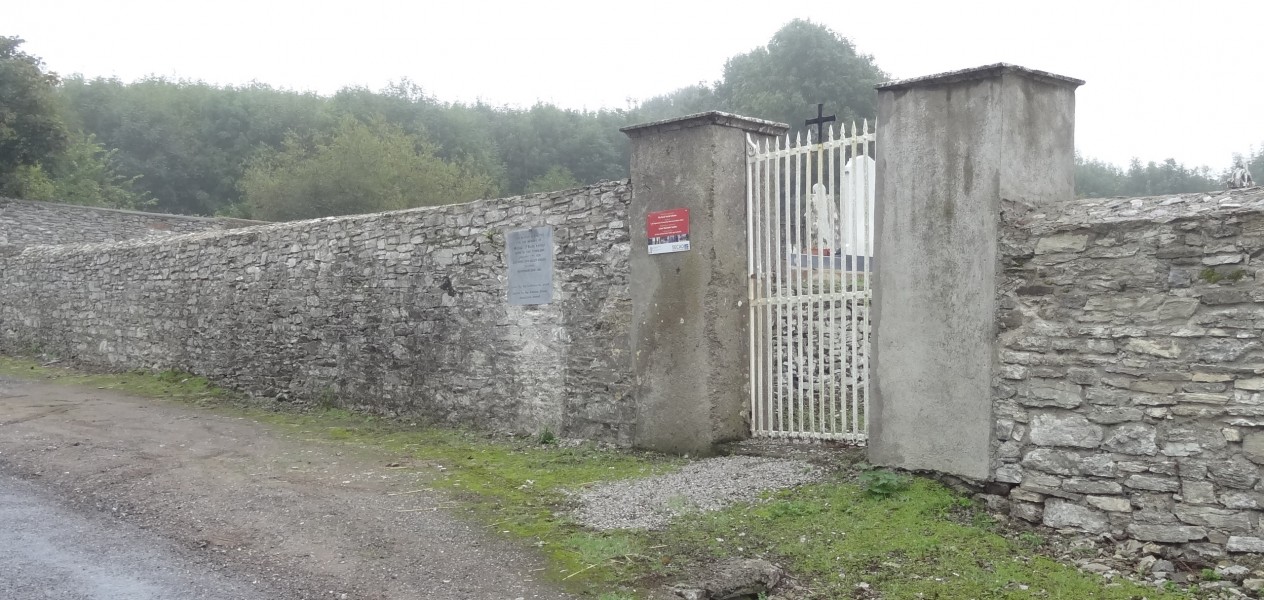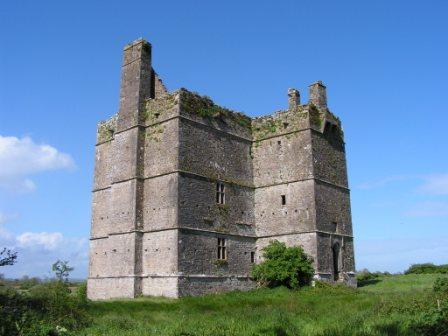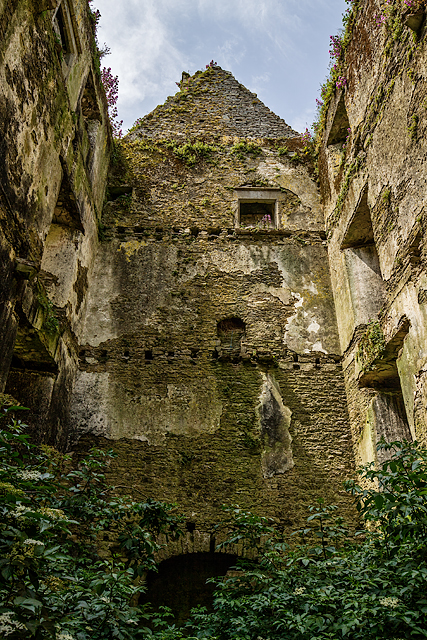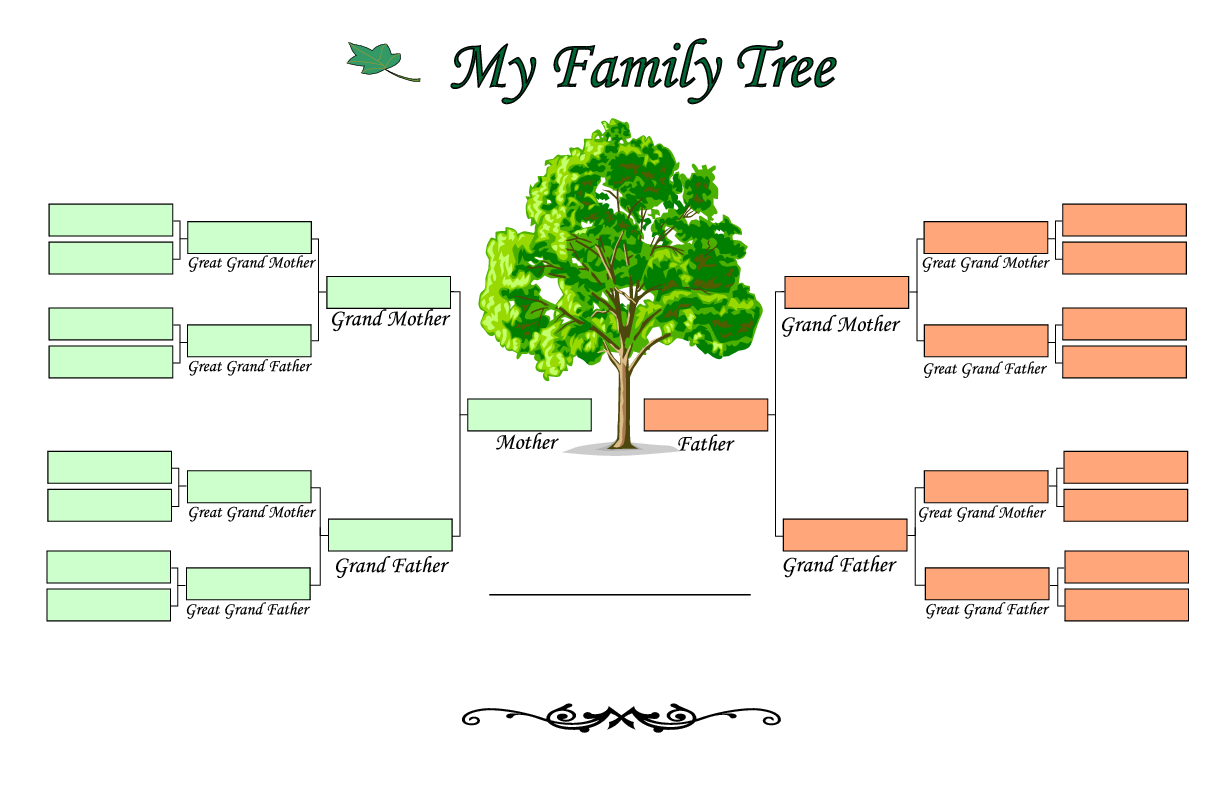When Elvis Presley was born in Tupelo, Mississippi, in 1935 his parents unwittingly named him after an Irish saint. Yes, the ‘King of Rock and Roll’ was really the ‘Patron Saint of Rock and Roll! Now you might not have heard of St Elvis but he’s associated with the diocese of Emly (now part of the Catholic diocese of Cashel and Emly). The patron of that diocese is known in Ireland as St Ailbe, who, apparently converted Munster to Christianity before St Patrick arrived to convert the rest of the country. In Wales, St Ailbe, patron saint of Munster, is also known….as St ELVIS!
The approach of St Patrick’s Day sets one thinking about the conversion of the Irish to Christianity. One story about St Ailbe/Elvis is that he baptized St David of Wales, who is commemorated on 1st March. The Welsh were Christian before the Irish – Wales was part of the Roman empire until the legions were finally withdrawn before 410 AD, and even then the inhabitants still considered themselves ‘Roman.’ All free men in the Empire were made citizens in 212 AD and Catholic Christianity was made the official religion of the empire in 380 AD.
In school I was taught that St Patrick came to Ireland to convert the Irish in 432 AD. The teacher made no mention of any Christians in Ireland before that date. Yet, the very first confirmed date in Irish history tells us a different story.
In his Chronicle (completed before 455 AD), Prosper of Aquitaine, a late Roman writer from Gaul (France) wrote that in the year 431 AD, ‘Palladius is ordained…….by Pope Celestine, and is sent as the first bishop to the Scotti believing in Christ.’ The ‘Scotti’ were the Irish – ‘Scotia’ was the Roman term for Ireland before we ended up living in wintery ‘Hibernia’. The date 431 is the first confirmed date in Irish history. Traditionally St Patrick is said to have arrived as a missionary in Ireland in 432, just a year later. But, surely this latter date actually refers to Palladius arriving in Ireland to minister to an existing Christian community in Ireland? He wasn’t sent as a missionary but as a bishop to the Christian community in Ireland who were numerous enough to require the guidance of a bishop, and Roman bishops were not missionaries. Tireachan and Muirchu, the two Irish biographers of St Patrick in the 600s tell us that Palladius failed in his ‘mission’ to convert the Irish, an unlikely situation because of the reason we gave above. ‘Missionary’ was not part of his job description. The Irish authors were just clearing the way for their hero, Patrick, but because Prosper of Aquitaine was a contemporary of Palladius so we must take his text with the seriousness it deserves We all know the outlines of St Patrick’s story, after all he left us a spiritual autobiography (the Confessio) and an irate letter to a renegade called Coroticus. Patrick tells us that he was a son of a deacon (and tax collector!) and grandson of a priest, and he probably came from the west coast of Britain (somewhere between the Bristol Channel and the Scottish border).
All the indications are that Patrick’s mission was confined to the north and west of Ireland. The only firm date with have for Patrick is 17th March, the day he died and it is uncontested. But we have no idea in which year he died. What does help is that the copies of his two surviving documents contain biblical quotations. These quotations are in two versions – the ‘Vetus Latina’ and the ‘Vulgate’. ‘Vetus Latina’ refers to the original Latin text of scripture used by the Roman Church. However, it was replaced gradually by the ‘Vulgate’, the more coherent Latin translation commissioned in 382 by Pope Damasus from St Jerome. The new translation only became widespread in the 400s and later. Although some Vulgate Latin is used in the surviving copies of Patrick’s writings, scholars reckon the seventh century editors updated and even ‘corrected’ the original ‘Vetus Latina’ text, suggesting that the Vulgate text was in widespread use in Ireland by the 600s.
All this suggests that Patrick must have conducted his mission in the middle to later 400s AD, perhaps about 450-490. What was especially odd about Patrick was his missionary impulse. He wandered all over the place when a Roman bishop was supposed to stay put, and only take occasional tours around his diocese. Patrick’s behaviour went down badly with the British bishops who followed the Roman practice. But Patrick knew something the British bishops overlooked. or were ignorant of – Ireland, unlike late Roman Britain, had no towns. Roman bishops were based in towns and cities, but how can you base yourself in a town or city when there are none in the country? Armagh is situated near Eamhain Macha, the seat of the Northern Ui Neill kings, but neither place was a town at the time.
There is a tradition that St Declan of Ardmore, like St Ailbe/Elvis operated in south Munster before St Patrick came to Ireland. Sadly, the surviving texts of Declan’s life are all late, from the 1100s, which means that we have to treat them with caution. Declan’s biographers tell of the concerns of their own time (Ardmore’s claim to be a bishopric) rather than of the circumstances of Declan’s life centuries earlier. But…and it’s an important ‘BUT’…there may be something in the idea that St Declan operated before St Patrick!
It’s all down to the archaeological fact that the Irish colonized parts of Wales from the 400s and perhaps even earlier! With the withdrawal of Roman legions from Wales itself about 380 AD, before they were finally removed from Britain before 410 AD, settlers arrived from Ireland. The two main groups were the Laigin from Leinster who settled in the north (Anglesey and north Wales) and in the Lyn (Laigin?) Peninsula. Meanwhile, south west Wales was settled by the Uí Liathain, and probably by the Deisí. There is no evidence of ‘invasion’ or of any warfare involved in this movement of people – it is even possible that the Irish were invited to settle in these areas.
The Uí Liathain were once the dominant group in the East Cork baronies of Barrymore, Kinatalloon and Imokilly, and even Coshmore & Coshbride. Castlelyons is named after them (Caisleán Uí Liathain). The Ui Liathain seem to have been related to the Deisí, who give their name to Decies, just across the Blackwater River. Very likely any colonization of south west Wales involved both groups. It seems a bit difficult to imagine that any emigrants from Ireland even then were entirely cut off from their homeland.
Independent evidence for this settlement by the Irish in south Wales is literally written in stone – ogham stones to be precise! Ogham stones are concentrated in south Wales, with Pembrokeshire having the largest number. They are written almost entirely in Old Irish, not Old Welsh/Brythonic. The furthest east they go is Silchester in Hampshire – the site of the Roman town of Calleva where a pillar with an ogham inscription was found dumped in a well. Most of the ogham stones in Ireland are also in the southern half of the country with only a few north of the Dublin to Galway line.
Even more intriguing, a small hoard of late Roman coins was found in the 1890s at Cuskinny Marsh on Great Island overlooking Cork Harbour (just east of Cobh). It’s been suggested that this collection was lost by a careless antiquarian about two centuries ago. Suspiciously, all the coins date from 268 AD to 337 AD, so it seems unlikely to have been a ‘lost’ collection which would normally contain a wider range of Roman coins. The ancient Irish didn’t use coins so this implies that the coins were a ‘ritual deposit,’ an offering to the ancient gods for either a successful trade or a safe sea journey. Note that Cuskinny Marsh faces the entrance to Cork Harbour. Were these coins deposited by a Roman merchant or an Irish mercenary in the Roman army? We simply don’t know, but they are evidence of Irish and Roman contact.
So, could it be that the tradition of St Ailbe/Elvis and St Declan converting the Irish of Munster before St Patrick arrived is a memory of the presence of Christianity in Ireland before Palladius arrived as ‘the first bishop to the Irish believing in Christ’? Did Christianity enter Ireland through the south coast, including West Waterford and East Cork before 431? It’s a question to ponder, and speculate on, this St Patrick’s Day…..
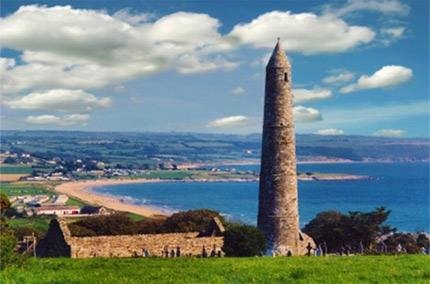


 The Charter of Midleton authorised the Corporation to erect a ‘common hall or tholsel’ for its meetings. A Market House had been erected in Midleton by 1685, but it was built by the landlord, Sir St John Brodrick, rather than by the Corporation. The Corporation met in the upper storey. There was a public clock on the Market Houre by 1750. The building was either rebuilt or refurbished in 1789. The building remained in Brodrick hands until the mid-1960s.
The Charter of Midleton authorised the Corporation to erect a ‘common hall or tholsel’ for its meetings. A Market House had been erected in Midleton by 1685, but it was built by the landlord, Sir St John Brodrick, rather than by the Corporation. The Corporation met in the upper storey. There was a public clock on the Market Houre by 1750. The building was either rebuilt or refurbished in 1789. The building remained in Brodrick hands until the mid-1960s.